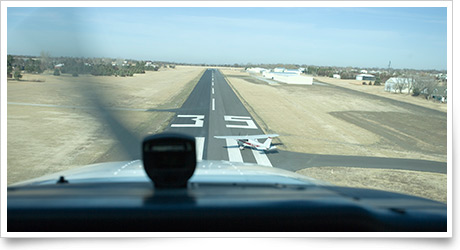| The following stories from the Nov. 09, 2012, edition of AOPA ePilot were provided to AOPA members who expressed an interest in the particular subject areas. Any AOPA member can receive information tailored to their areas of interest by updating their preferences online |
training tips‘Positive rate’
Adding power to go around, and maneuvering slightly right of the runway to keep tabs on the aircraft below, the student reached for the flap switch—but what happened next was, to say the least, unexpected: Instead of climbing smartly away from trouble, the aircraft’s sink rate momentarily increased. What went wrong?
During maneuvers such as takeoffs, stall recoveries, and go-arounds, performing steps of the appropriate checklist is a must—but be sure the current step has had its effect before moving on to the next. In many maneuvers, a positive rate of climb must be verified before proceeding to the next checklist item. As given in the Private Pilot Practical Test Standards for a normal or crosswind takeoff, the applicant should retract “the landing gear, if appropriate, and flaps after a positive rate of climb is established.”
What instrument do you refer to when verifying a positive rate of climb? The go-to gauge is your vertical speed indicator (VSI).
Chapter 5 of the Airplane Flying Handbook discusses a nuance of the crosswind takeoff and climb technique in which the positive rate of climb also marks the point when the pilot should discontinue the slipped method of crosswind correction.
“This side-slipping should be continued until the airplane has a positive rate of climb. At that time, the airplane should be turned into the wind to establish just enough wind correction angle to counteract the wind and then the wings rolled level. Firm and aggressive use of the rudders will be required to keep the airplane headed straight down the runway,” it explains.
As for that go-around, you can avoid an untimely sink rate by assuring that your aircraft’s descent has been stopped before you complete the flap retraction. In some aircraft such as older Cessna 172s with 40 degrees of flap travel, the checklist calls for an immediate partial retraction of flaps (to reduce drag), and then gradual retraction based on obstacle-clearance needs and applying recommended airspeeds.
Know your checklist and practice the maneuvers often, making sure to scan the VSI for a positive rate! training productsAirClassics HS-1A headset from ASAIf you’re shopping for a moderately priced headset, ASA presents the AirClassics HS-1A, now with a flex boom microphone. The unit offers a noise reduction rating of 23 decibels; gold-plated microphone and headphone plugs to ensure a good connection and resist corrosion; an adjustable headband; foam ear seals; and a lifetime warranty. The headset sells for $149.95 and may be ordered online or by calling 800/272-2359.
Note: Products listed have not been evaluated by ePilot editors unless otherwise noted. AOPA assumes no responsibility for products or services listed or for claims or actions by manufacturers or vendors. final examQuestion: What is this flexible metal braid I see connecting the aileron to the main part of the wing on the airplane that I fly?
Answer: What you are referring to is most likely known as a bonding strap. As an airplane moves through the air, friction causes static electricity to build up on the airplane’s surfaces. Static wicks are often attached to control surfaces in an effort to dissipate this charge. In addition, the bonding strap provides a low-resistance path between the control surface and the airplane’s main structure to prevent the buildup of static electricity on the control surface. This in turn also helps to mitigate radio interference.
Got a question for our technical services staff? Email [email protected] or call the Pilot Information Center, 800/872-2672. Don’t forget the online archive of “Final Exam” questions and answers, searchable by keyword or topic. |
 Set up nicely on final approach, the student pilot was dismayed to observe an aircraft taxiing onto the runway and—without a word on the common traffic advisory frequency—
Set up nicely on final approach, the student pilot was dismayed to observe an aircraft taxiing onto the runway and—without a word on the common traffic advisory frequency— 

